#cool reptiles
Explore tagged Tumblr posts
Text

Bruh,,,,
34K notes
·
View notes
Text
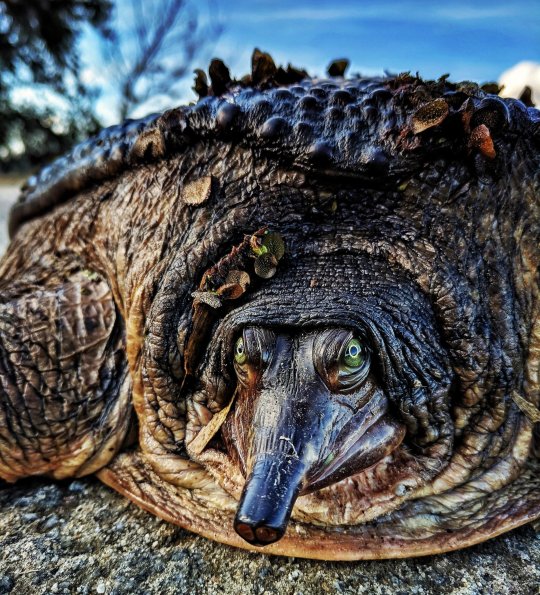
Sunshine State residents, do you recognize this little neighbor? It’s the Florida softshell turtle (Apalone ferox)! Unlike many turtles, you might find this critter darting about on land or swimming rapidly in water. Its hydrodynamic, flattened shell, and four strongly-webbed feet help it to move swiftly. Softshells stick mostly to water and have long necks and snouts that they poke above the surface, like a snorkel, to breathe. Juveniles have more contrasting color patterns than adults: their carapace, or shell, can be olive, tan, or light brown with spots and a yellow rim.
Photo: kimberry, CC BY-NC 4.0, iNaturalist
#science#nature#natural history#animals#did you know#fact of the day#turtles#herpetology#florida#cool animals#weird animals#reptile
3K notes
·
View notes
Note
could you draw Pomni with Gummigoo?
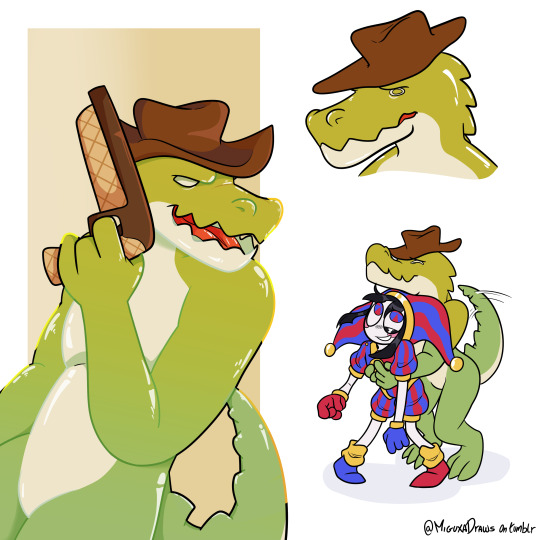
he looks very edible
#i'd take a bite out of him#NOT affectionately#i like gummies#but i like reptiles too#i love scalies tbh#a shame this one is edible#i'd actually eat him alive#my art#tadc#the amazing digital circus#tadc art#tadc fanart#digital circus#tadc pomni#pomni#pomni tadc#pomni fanart#tadc gummigoo#gummigoo#gummigoo tadc#gummigoo x pomni#pomni x gummigoo#funnygummy#gumni#jellyjester#cool shipnames lol
2K notes
·
View notes
Text

I joined a little art-community and this is the first task - to create a pattern. I managed to do seamless pattern! And these sneks are just lovely, aren't they? :)
#digital art#artist on tumblr#art#artists on tumblr#animal art#snake#snake art#nature art#ball python#python#snakes are cool#snek#reptile#serpent#danger noodle#illustration#digital illustration#pattern#digital artwork#no step on snek
685 notes
·
View notes
Text
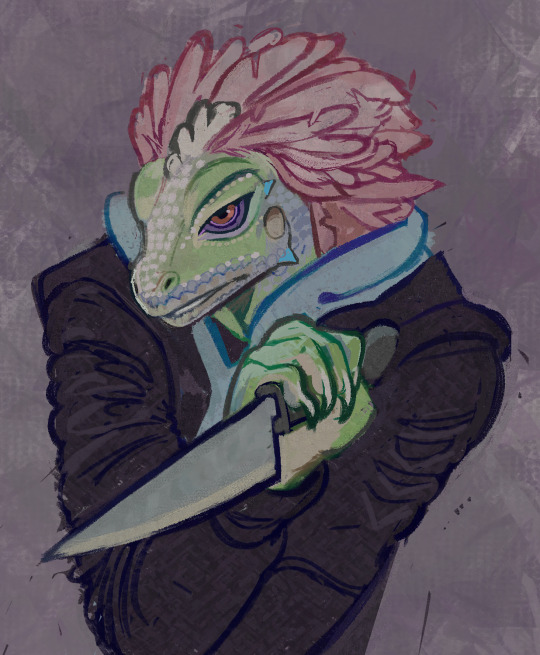
i know i made him look too cool let me have this 🦎
#spinner's hair always bothered me so much#like i love it-- it looks sick as hell on him but how tf does a reptile grow hair???????????#feathers. feathers is how#also i know his quirk is gecko but i was 30m into his chinese water dragon design before i remembered and now i think he looks too cool#may redesign again more gecko-ways#fanart#my art#bnha#bnha fanart#iguchi shuichi#spinner
477 notes
·
View notes
Text
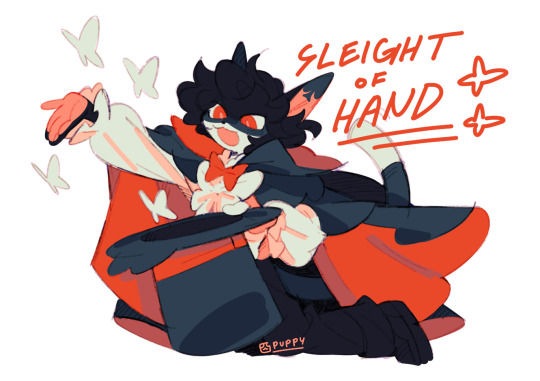

wanna see a magic trick? 🪄🎩
#YEAYYYY i like drawing this guy#now that i think abt it i cant remember the last time i saw a furry with tattoos.... ive decided not to think too hard about how it would#work but i think i like the idea of him getting playing card tats on his ears would be cool ^_^#apparently anthro species on furth include birds and mammals and i think fish amphibians and reptiles are non anthro#so instead of whipping out doves he would make white butterflies appear out of his hat :o)#its sort of meant to tie in with the ruffles on his shirt resembling a butterfly!!! i thought id make it close to a swallowtail so#that way its easy to see at a glance. i think that would look really cool irl#he looks a lot like joker p5 now that i look at it... it wasnt intentional but the red eyes and black messy hair is obvious huh#oh but the way his hair curls in the front isnt strictly in one direction just so that its easy to draw lol. its meant to curl around his#hat brim a little bc i thought it would look cool#my art#myart#my oc#oc#sleight#laika's comet#laika's comet oc#fan character#furry#furry art#fur
2K notes
·
View notes
Text
Namib Sand Geckos: these nocturnal geckos have biofluorescent markings that emit a bright, neon-green glow when exposed to the moonlight

This species (Pachydactylus rangei) is found only in the Namib Desert, which stretches across Namibia, Angola, and South Africa; the geckos typically inhabit the arid, coastal region known as the Skeleton Coast.
In order to escape from the blistering heat of the desert, they use their webbed feet to burrow down into the sand during the day, and then emerge only at night, when the temperature has finally dropped. The webbing on their feet also enables them to run more easily across the dunes.
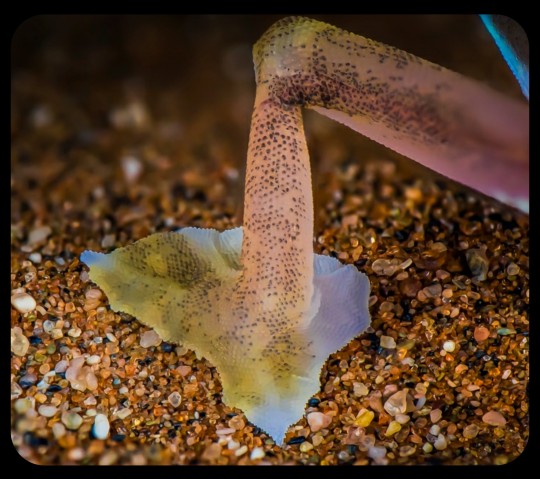
Namib sand geckos are covered in translucent scales, but they also have a strangely colorful appearance, as the colors/shades of their circulatory system, spinal column, internal organs, and optical membranes remain partially visible through the skin, producing various shades of pink, dark blue, purple, magenta, orange, and yellow.
They also have several distinctive markings running along their lower flank and encircling their eyes; these markings are known to fluoresce when exposed to UV light (including moonlight), emitting a bright, neon-green glow.

Some researchers have theorized that the biofluorescent markings may act as a signal to other geckos, allowing them to locate one another in the vast, desolate expanse of the desert, as this paper explains:
The fluorescent areas of P. rangei are concentrated around the eyes and along the lower flanks. This positioning is practically invisible to predators with a higher perspective (e.g. birds and jackals), but highly conspicuous from a gecko’s perspective. As P. rangei is sociable but generally solitary, and occurs at low population densities, such a signal might serve to locate conspecifics over greater distances ...
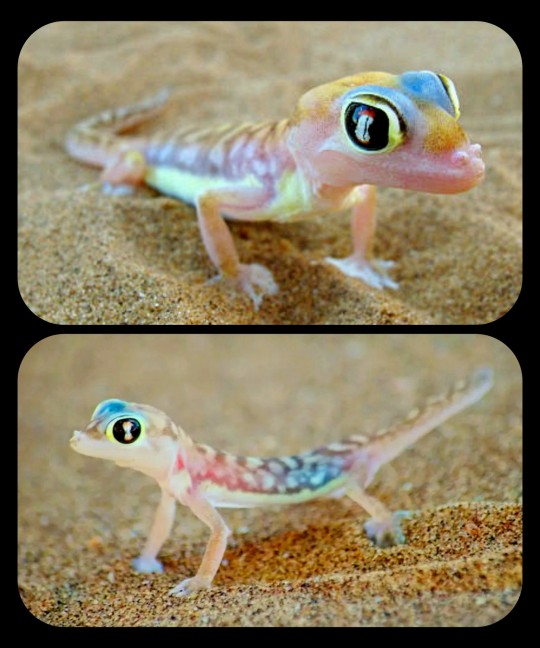
Encounters in P. rangei might serve purposes beyond mating opportunities: as the Namib desert has extremely low precipitation, fog is a key water source for its flora and fauna. Fog condenses on the bodies of the geckos, and they lick it from their faces. In husbandry, we have observed individuals licking water from conspecifics, taking advantage of a much greater available surface area.
Additionally, after short periods of isolation, the geckos run to meet each other. The combination of vital hydration with socialisation might reinforce signals that enable such meetings, and the cost of visibility to predators with higher vantage points, might constrain the signals to regions best visible from eye-level and below.
The Namib sand gecko is the only terrestrial vertebrate that is known to use an iridophore-based form of biofluorescence (you can find a more detailed explanation of that mechanism in the article mentioned above). The fluorescent dermal markings are also unique to this species.
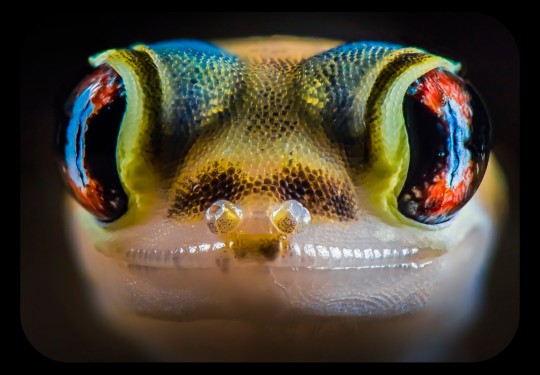
Sources & More Info:
Scientific Reports: Neon-green fluorescence in the desert gecko Pachydactylus rangei caused by iridophores
Animal Diversity Web: Pachydactylus rangei
Dr. Mark D. Scherz's Blog: A Neon-Green Glowing Gecko!
Australian Geographic: Skeleton Coast - Namibia's strange desert dwellers
#herpetology#reptiles#gecko#Pachydactylus rangei#namib sand gecko#palmatogecko#namib desert#namibia#biofluorescence#animals that glow#lizards#cute animals#biology#nature#africa#squamata#web-footed gecko#cool animals#geckos#South Africa#Angola#Skeleton Coast#wildlife#not an arthropod#but still pretty cool
820 notes
·
View notes
Text
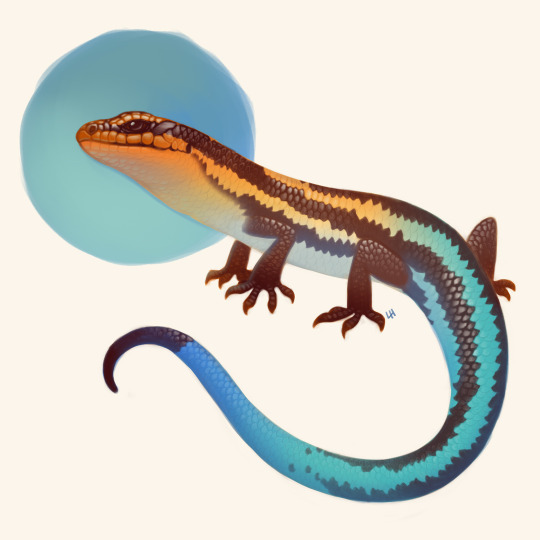
The 2D train continues! Featuring the Five lined skink 🦎
もっと2Dアートです! 今日のアートはオカダトカゲです 🦎
#art#アート#illustration#photoshop#reptilesofinstagram#reptile#reptileart#爬虫類#lizard#トカゲ#skink#herpetology#science#blue#青#red#赤い#cartoon#cool
533 notes
·
View notes
Text
Note: Reasons to Be Cheerful has had weirdly huge formatting issues for the past six or so months, so if that version is a mess, this link should work better.
"Florida Power & Light Company (FPL), the Sunshine State’s largest power utility, employs all the people you might expect: electricians, lineworkers, mechanical engineers — and a few you might not. For over 40 years, the company has kept a team of wildlife biologists on staff. Their task? Monitoring the giant carnivorous reptiles that reside in one of the state’s nuclear power plants.
Saving the American Crocodile
What sounds like a low-budget creature feature is actually a wildly successful conservation story. It goes like this: In 1975, the shy and reclusive American crocodile was facing extinction. Over-hunting and habitat decline caused by encroaching development had pushed its numbers to a record low. By 1975, when it was listed as endangered under the Endangered Species Act, there were only 200 to 300 left.
Three years later, in 1978, workers at the Turkey Point nuclear power plant in Homestead, Florida happened upon something that must have made them gasp: a crocodile nest along one of the plant’s 5,900-acre “cooling canals.” Rather than drive the crocs away — perhaps the easiest solution — FPL hired a team of biologists and implemented a Crocodile Management Plan. Its goal was unconventional: provide a suitable habitat for the crocs within the workings of the nuclear power plant, allowing both to coexist.
Over the course of the next 30 years, FPL’s wildlife biologists monitored nests, tagged hatchlings and generally created a hospitable environment for the reptiles. As it turned out, the plant’s cooling canals provided an ideal habitat: drained earth that never floods on which to lay eggs directly adjacent to water. Over the years, more and more crocs made the cooling canals home. By 1985, the nests at Turkey Point were responsible for 10 percent of American crocodile hatchlings in South Florida. In 2007, the U.S. Fish and Wildlife Service downgraded the American crocodile’s status from endangered to threatened, singling out FPL for its efforts.
The program continues to this day. To date, biologists have tagged some 7,000 babies born at the plant. In 2021, there were a record-setting 565 crocodile hatchlings at the Turkey Point facility.
"Reconciliation Ecology"
Turkey Point’s efforts are an example of what is known in the conservation world as “reconciliation ecology.” Rather than create separate areas where nature or animals can thrive in isolation from humans, reconciliation ecology suggests that we can blend the rich natural world with the world of human activity. Michael Rosenzweig, an emeritus professor of ecology and evolutionary biology at the University of Arizona, was a leading force in establishing this concept. The author of Win-Win Ecology: How the Earth’s Species can Survive in the Midst of Human Enterprise, Rosenzweig has pointed out that although human encroachment has typically been considered a threat to biodiversity, the notion that the world must be either “holy” or “profane,” ecologically speaking, is simply not true.
“In addition to its primary value as a conservation tool, reconciliation ecology offers a valuable social byproduct,” writes Rosenzweig in his first chapter. “It promises to reduce the endless bickering and legal wrangling that characterize environmental issues today.”
-via Reasons to Be Cheerful, May 5, 2022. Article continues below. All headings added by me for added readability.
Dr. Madhusudan Katti, an associate professor in the Department of Forestry and Environmental Resources at North Carolina State University, was inspired by Rosenzweig when he did his postdoc at Arizona State. Katti has now been in the field of reconciliation ecology for two decades and teaches classes on the subject. “To me it’s finding solutions to reconciling human development with biodiversity conservation,” Katti says.
This common ground between development and conservation can be consciously planned, like FPL managing a crocodile habitat at a nuclear power plant or the state-sponsored vertical gardens and commercial farms on high-rise buildings in Singapore. Other examples include the restoration of the coral reef around an undersea restaurant in Eilat, Israel, or recent legislation in New York City requiring patterned glass on high-rise buildings, making windows more visible to migratory birds. Other planned examples of reconciliation ecology can be more individually scaled: a rooftop garden in an urban setting, modifying your garden to earn a “backyard bird habitat” certification from the Audubon Society, or even just mowing your lawn less often...
Reconciliation Ecology: Nature's Already Doing It Without Us
But there are countless examples of “accidental” incidents of reconciliation ecology, as well. One of Katti’s favorites is the kit fox of California’s San Joaquin Valley. “The kit fox was one of the very first species listed on the Endangered Species Act,” Katti says. Its decline was caused by habitat loss through agricultural and industrial development, as well as the extermination of the gray wolf population, which led to an increase in coyotes. So kit foxes adapted and moved to new habitats. One of these was the city of Bakersfield, California.
“Bakersfield, surrounded by oil pumps, would be the last place you’d expect to find an endangered species,” Katti says. But researchers think kit foxes have migrated to Bakersfield because they actually have more protection there from predators like coyotes and bobcats. “The kit foxes have figured out that if they can tolerate the human disturbance and live with people, then they are safer from all these other predators,” he says.
Living in the city has led to some interesting behavioral changes. In the wild, for instance, a female kit fox gives birth to her young and raises them by herself in a den. But in the city, researchers have observed multiple females raising their litters together in the same den. “It’s like a form of cooperative breeding,” Katti says. “That wouldn’t happen in the wild.” ...
The Big Picture: How We Think about Conservation
Reconciliation Ecology isn’t just we humans welcoming animals like crocodiles and foxes into our environments, though. It’s also living with nature in a way that most Western societies haven’t done since the Enlightenment. “In recent years, there’s been a recognition that the ‘fortress conservation’ model — keeping nature separated from humans and not thinking of or valuing human-inhabited landscapes — those ideas are outdated,” says Katti.
In fact, in Katti’s classes on reconciliation ecology, he embraces the notion of reconnecting people with their land if they have been unjustly separated from it. “The term reconciliation also applies to all the colonial legacies where both nature and people have been harmed,” Katti says. “For Indigenous communities, the harm done to ecosystems, it’s happened together. So you can talk about addressing both. That’s where a lot of my thinking is at the moment.”
A hopeful version of this sort of reconciliation is happening in California where colleagues of Katti’s who are tribal members are re-introducing “tribal burns” in some areas. Controlled burns have been a part of many Indigenous cultures for millenia, both as a way to prevent devastating forest fires, but also to encourage the growth of certain plants like hazel that are used for basket-weaving and other crafts.
“The notion that people don’t belong there and ‘let nature take care of itself’ doesn’t really work,” Katti says. “That’s the legacy of Western European Enlightenment thinking — a divide between human and nature. That is a real faulty view of nature. People have been part of the ecosystem forever.”
-via Reasons to Be Cheerful, May 5, 2022
#a bit older but still ongoing/relevant and still very cool#florida#crocodile#reptile#ecology#environment#sustainability#endangered species#united states#california#kit fox#nuclear power plant#reconciliation#colonialism#the enlightenment#conservation#human beings#good news#hope#urban ecology
2K notes
·
View notes
Text








Cute baby keelback snake 🐍❤️
유혈목이 (Rhabdophis lateralis)
#snakes of tumblr#photographers on tumblr#my photography#original photographers#art#lensblr#photography#wildlife photography#macro photography#nature photography#nature#reptile#colubridae#keelback#snake#snakes#nature video#baby snake#snakes are cool#september 23 2024#noai#no to generative ai
79 notes
·
View notes
Text

“Sammy the Gecko”
Digital Painting, Made in Procreate
3064x4096px
#crested gecko#gecko#soft scale#reptile#animals#cool#akadoodles#digital painting#silly art#digital oil painting#digital art#procreate oil#realism#digital artist#artists on tumblr#art
77 notes
·
View notes
Text

#kirby#daily kirby#my art#digital#hal laboratory#nintendo#insects#bugs#ask to tag#he found a bug :)#we went to the zoo today and there were lots of cool things but the bugs were my favorite#the birds were second#and the ungulates were third#then carnivora#and I'm just not really a primate person#oh and there were a couple marsupials idk where I'd place them#and also a few reptiles and like one amphibian that we didn't actually see cuz it was too crowded#and a couple rabbits lol#I did also really like the rabbits and the wallaroos.#I like the zoo.#we took my fancy big wheelchair and everything
96 notes
·
View notes
Text

Act like Megalochelys atlas and smile, because it’s Fossil Friday! One of the largest known land turtles, scientists think this massive reptile could reach heights of 5.9 ft (1.8 m)—tall enough to look a grown human in the eye. This specimen’s shell measures some 7.4 ft (2.3 m) long and in life, it may have weighed more than 2,000 lbs (907 kg). Megalochelys lived during the Late Pliocene about 2 million years ago. The fossil on display in the Museum’s Hall of Vertebrate Origins was found in 1922 in Chandigarh, India.
Photo: © AMNH
#science#amnh#museum#fossil#nature#natural history#animals#paleontology#turtle#herpetology#did you know#fact of the day#pliocene#fossil friday#cool animals#turtles#smile#ancient animals#reptiles
2K notes
·
View notes
Text

#I'm actually really surprised he was so cool with this#peppercorn bing bong#snake#snakes#reptile#reptiles#reptiblr#corn snake#corn snakes#peach corn snake#he really liked exploring and climbing the wild mustard#I was so scared he was going to try to drop to the ground and bolt#he reached for me which is a good show of trust#love you too buddy
333 notes
·
View notes
Text
p2 of me talking about animals
p1
18. Violet backed starling

19. Plains spaidfoot toad


20. Bunny harvestman


21. Bhupathy's purple frog


22. Arabian Sand Boa


23. Pill scarab beetle


24. Blue Striped Australian Bee

25. Nembrotha cristata sea slug

26. Dracula parrot


27. Leaf slug


28. Blue Dragon Mollusk

29. Black rain frog

30. Satanic leaf tailed gecko


31. Earless monitor lizard
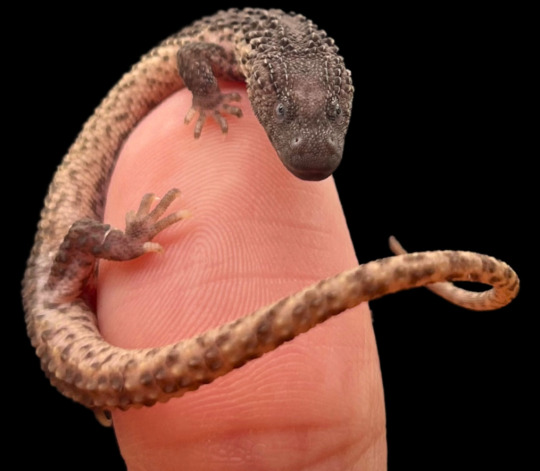

32. Sea bunny

Reblog with a weird species you like!
Bonus photos of moths in a collage because i didn’t want to make a part 3 and also one of crows I like and wanted to share


41 notes
·
View notes
Text
I was looking at photos of chameleons and I was like, “what if Espio was just chilling on a branch like the chameleon he is” and I had to draw what I saw in my head

#quick sketch#i just had to get this out of my system#look at his cute tail#I love my lizard boy#I really wish they had more reptile characters in Sonic#they’re so cool and unique#sonic the hedgehog#roxi's art#my art#espio the chameleon#sonic#fanart#Sonic fanart#sth
864 notes
·
View notes